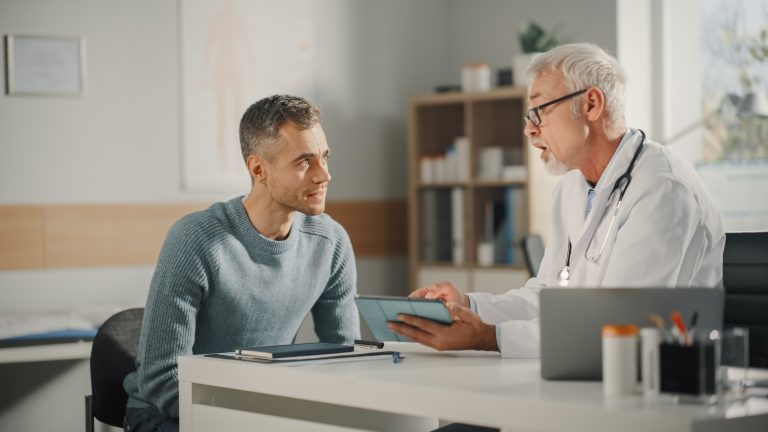Canal stenosis, or spinal narrowing, is a common spine condition in which the spinal canal gradually becomes narrower over time. The natural degeneration of the spine, genetics, and injury are the primary causes of canal stenosis.
Canal stenosis can develop in any part of the spine: the cervical spine, thoracic spine, or the lumbar spine. This condition can be undetectable. However, if a narrowed spinal canal leads to the compression of a nerve root or the spinal cord, several uncomfortable symptoms can occur.
Additionally, depending on the location and severity of the canal stenosis, treatment will differ. If conservative efforts don’t work, you will need to consider surgery. There are conservative treatment options such as physical therapy and injections.
Canal Stenosis Symptoms
The most common canal stenosis symptoms are localized pain at the site of the nerve root or spinal cord compression and pain along the path of the affected nerve. But, other symptoms include:
- Muscle weakness
- Numbness or tingling
- Sciatica
In the case of cervical stenosis, symptoms affect the upper extremities, such as the arms, hands, neck, and shoulders. Thoracic stenosis produces symptoms in the torso and abdomen, while lumbar stenosis affects the lower back, hips, and feet.
Depending on the location, the patient will experience different canal stenosis symptoms. This includes:
- Cervical spinal canal stenosis: Patients with spinal stenosis in the cervical region of the spine typically experience weakness, tingling, numbness, and pain in the neck, upper back, shoulders, and arms. In extreme cases, damage to the protective covering that surrounds nerve fibers in the spinal cord can occur. In this case, symptoms may affect balance or other vital functions.
- Thoracic spinal stenosis: This condition affects the middle of the back, but can be felt in other parts of the body as well.
- Lumbar spinal stenosis: Occurring in the lumbar spine, this spine condition usually presents itself with pain in the lower back. Some patients also experience pain, numbness, tingling, and weakness in the hips, buttocks, legs, and feet.
Canal Stenosis Treatment
Asymptomatic patients do not necessarily need treatment. However, conservative treatment such as medications, physical therapy, activity modification, and exercise can all help alleviate the pain caused by nerve root or spinal cord compression.
Moreover, it is oftentimes necessary to treat the compression itself. If conservative treatment for canal stenosis does not produce the desired results, surgery might become an option.
Depending on the location and the severity of a patient’s canal narrowing, a physician may recommend surgery. At BEST Health System, our board-certified surgeons perform minimally invasive surgeries for canal stenosis.
BEST Health System
Contact us today to more about BEST Health System. Our team is dedicated to providing patients with a less invasive, more effective alternative to traditional surgery. Start your path to recovery today.
